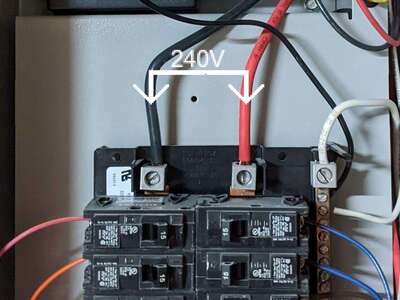Electrical supplies
Three-phase transformers section coming soon!
Split-phase supplies
Split-phase electrical supplies are a form of single-phase distribution, widely used in North America and a few other areas with similar wiring practices; compared to regular single-phase systems, split-phase transformers have an additonal tap at the centre of the windings; thus, three wires have to be supplied rather than two. The central tap is then connected to earth (ground), forming the neutral of the circuit.
Because of this, it's possible to obtain the full voltage of the single-phase supply through the two outer line conductors, which are often also called "legs" - 240V in the US and Canada and 200V in Japan - and half of that (120/100V) between one of them and the neutral. This allowed these countries to retain the use of 120/100V appliances while distributing the full voltage to heavy equipment that needed it. This also means that the line wires are only referenced to earth at half the voltage, and thus touching one of them will only result in a shock at that voltage rather than the full 240/200V.

The two line (hot) wires are often referred to as phases, though that's technically a misnomer as this isn't a "proper" multi-phase system; still, it's natural to compare it to a three-phase one as that's the closest other equivalent in regular use, so using this term is entirely understandable.
Note that in apartment blocks in North America it's common for individual apartments to be supplied with just two phases out of a 3-phase 120/208V supply rather than a split-phase 120/240V one; most 240V equipment is also rated for 208V for this reason and in that case will run at a lower power.